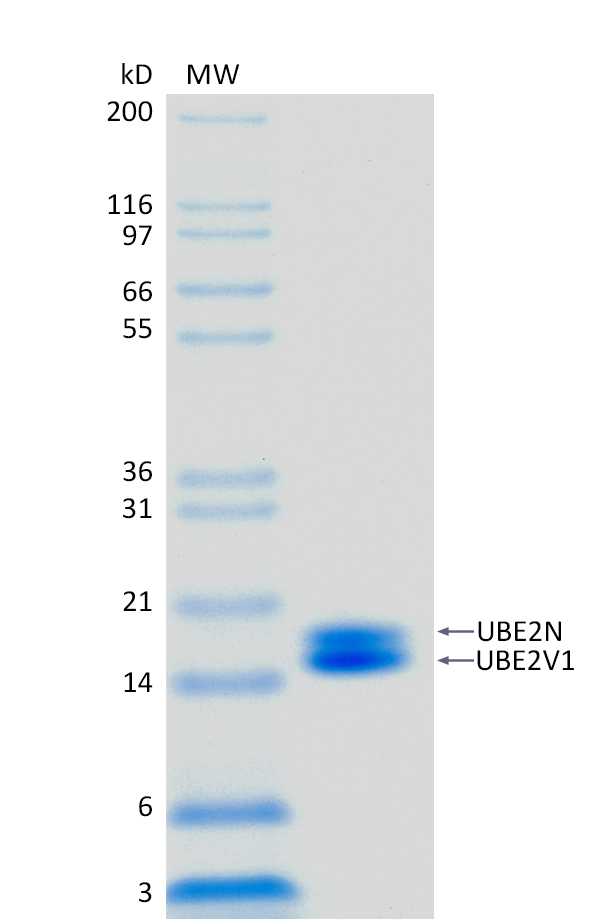 2 μg UBE2V1/UBE2N run on 4-12% SDS-PAGE gel under reducing conditions
2 μg UBE2V1/UBE2N run on 4-12% SDS-PAGE gel under reducing conditionsFor Research Use Only (RUO)
McKenna, S., et al., (2003) J Biol Chem 278:13151-13158. PMID 12569095
Eddins, M. J., et al., (2006) Nat. Struct. Mol. Biol. 13:915-920. PMID 16980971
Hodge, C.D., et al., (2016) Oncotarget 7:64471-64504. PMID 27486774
Vujanovic, M., et al., (2017) Mol Cell 67:882-890. PMID 28886337